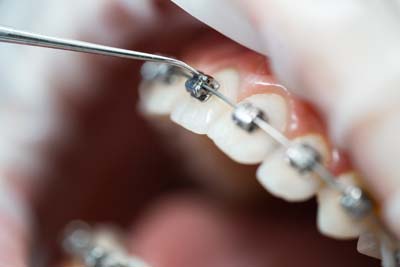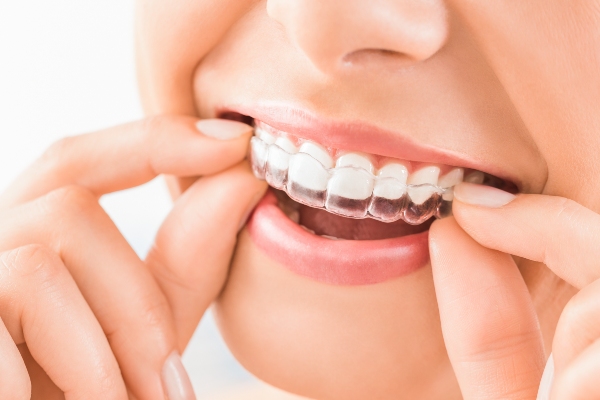A Step-by-Step Process of How Braces Work

Braces are one of the most popular ways to straighten teeth and gain a more attractive smile, but all too many who could benefit put off treatment because they do not know how the process works. By knowing the step-by-step process of braces, however, you can decide whether or not they are a good choice for you.
How braces work to move teeth
While each patient may experience a slightly different process, most orthodontists follow a similar process when it comes to providing braces treatment. The following is everything to know about how the braces process works, featuring the three steps that are most likely to be involved.
Initial consultation
The first step for every patient receiving braces is to schedule an initial consultation with an orthodontist, who can then conduct an oral examination and determine what teeth-straightening options are available to the patient. After doing so, the orthodontist can discuss the options with the patient and determine whether or not braces are the most appropriate form of treatment.
In some instances, the orthodontist may recommend the patient have their teeth cleaned and be treated for any oral health concerns that exist, which may include cavities, gum disease or chipped teeth.
Braces treatment
After both the patient and the orthodontist agree to proceed with braces treatment and the mouth is properly prepared, the treatment process can begin. The placement of the braces is rather simple and only takes a few hours, and it involves placing the brackets on teeth and using them to connect the metal wire. As treatment begins, there is likely to be an adjustment period in order to get used to living life with braces. There is likely to be some pain for the first week after each session. It is important to eat a proper diet when wearing braces and avoid doing anything to damage the teeth in any manner.
Follow-up care
Once the teeth are straightened and your orthodontist believes it is time to have the braces removed, the process is not completely over. If proper post-braces treatment is not provided, the teeth are likely to shift back into their natural position. Subsequently, your orthodontist is likely to have you wear a retainer to ensure tooth shifting does not take place. It can take over a year for the bone to form properly around teeth and ensure they do not shift back into their original position, so the retainer may need to be worn for a while.
Talk to an orthodontist about braces
There is nothing like having a beautiful smile to show off every day, and it helps many feel more confident and perform better at work, school and in social situations. If you are considering braces as teeth-straightening treatment, consult with us today and schedule a time to come in for your first visit. During your initial consultation, we will conduct an oral examination and ensure all of your questions are answered.
Are you considering braces in the Madison area? Get more braces information at https://rosecityorthodontics.com or call Rose City Orthodontics at (973) 245-9577 for an appointment in our Madison office.
Check out what others are saying about our services on Yelp: Read our Yelp reviews.
Related Posts
Invisalign® is a popular alternative to traditional braces. Read on to learn some tips for getting the best results out of your Invisalign treatment. With Invisalign, patients can wear their aligner trays in public without worrying about their appearance. In addition, it is much easier to clean the teeth since the aligners are removable, and…
You may be interested in using Invisalign® to correct only your top or lower teeth. Continue reading to learn more about how Invisalign treatment is used. While Invisalign may be used to straighten either the lower or upper teeth, most situations require correcting the two arches. The purpose is to ensure patients have a well-aligned…
Sometimes, as they grow up, some children develop a narrow upper jaw. Having a narrow jaw can lead to dental problems down the road, such as bite problems or tooth decay. Palatal expanders may be able to help. Understanding narrow jaws can help your child receive the necessary care and improve the overall dental health…
Considering Invisalign®? Read on to learn more about this discreet teeth-straightening treatment. Traditional metal braces are the first thing that comes to our minds when we think about orthodontic treatment. Yet, more and more people are shying away from braces because the metal wires and brackets tend to attract unwanted attention to our teeth. Invisalign…


